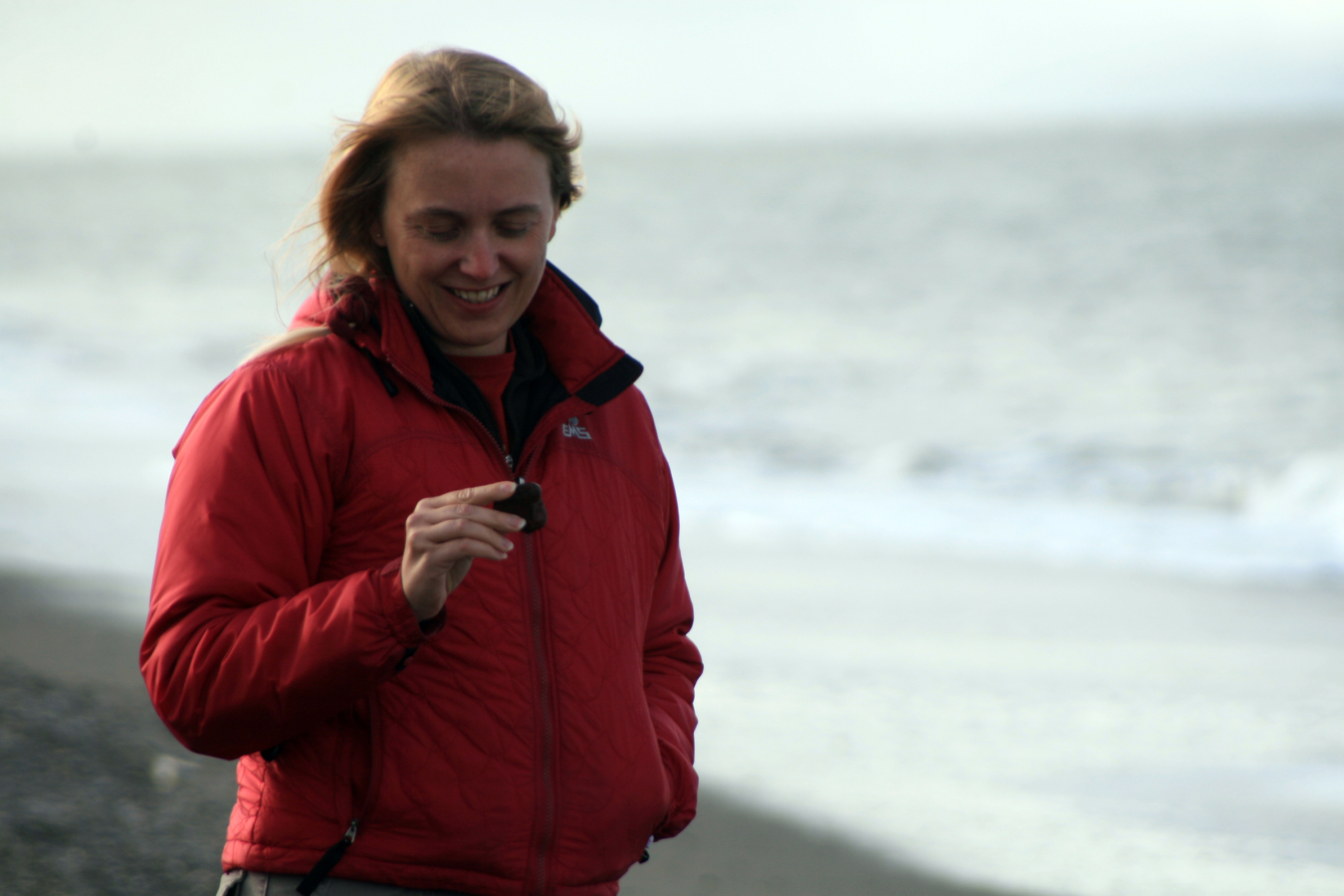Learn why Kelly Rose loves her job as a Geology & Geospatial Team Lead at the National Energy Technology Laboratory.
May 9, 2019
Kathleen “Kelly” Rose is a Geology & Geospatial Team Lead at the National Energy Technology Laboratory, Albany, Oregon. She received her Bachelors of Science from Denison University, a Masters in Science from Virginia Tech, and she is currently a Ph.D. from Oregon State University. Learn more about Dr. Rose here.
What inspired you to work in STEM?
My pursuit of a career in STEM evolved from childhood interests in Earth sciences, archaeology, and the natural system around us. From the time I was two years old I had a rock collection. Both of my grandfathers had a love for science that they shared with me, one was a high school science teacher and I still have his rock hammer and hand lens to this day.
As a kid my mom, brother and I would walk, hike, camp, and explore outdoors, and while Michigan is fairly flat, geomorphologically, I always had an innate interest in geologic things. Thanks to two Earth science teachers, one in 5th grade, and another in 6th grade, my interest in natural systems as a whole, was further kindled.
By the time I went to high school, I knew the path I walked to and from school each day was a glacial esker (sediments laid down by a river beneath a glacier long ago). So when it came time to pursue a college degree, I knew, without completely understanding what it meant that I wanted to study geology.
Over the past decade, I have learned to leverage my field and laboratory knowledge and expertise as a geologist in a new data-driven direction, as a geo-data scientist. I work with other researchers from other STEM disciplines (e.g. computing science, statistics, etc) to innovate and develop data-science solutions to geologic and geospatial problems.
What excites you about your work at the Energy Department?
When I was a kid I loved mysteries, books in particular always captured my attention. The job of a geoscientist is a bit like playing the part of a detective, trying to piece together the picture of what has happened, or in some cases will happen, based on limited clues and information. The world is not black and white, there are rarely simple yes and no answers to most questions. So having the opportunity to use geoscience tools in collaboration with other disciplines to answer and address the “grayscale” issues related to energy and the environment is a challenge, but a fun one!
We do not often have the luxury, when faced with many of the questions and problems we’re asked to address here at the lab, particularly in relation to subsurface energy systems, to physically interact with those systems. They are remote, often residing 10,000’s of feet below the Earth’s surface. So we utilize and develop tools and datasets to predict or improve characterization of what occurs in the subsurface. This is where the detective work comes into play, trying to constrain what is happening based on clues and often discontinuous information. It also means we work on multi-disciplinary teams to properly tackle complex problems.
How can our country engage more women, girls, and other underrepresented groups in STEM?
I grew up with amazing role models in the STEM arena, almost entirely men. I never recall anyone making a fuss over gender and STEM related activities and efforts. That neutrality, normalcy, as well as the opportunities to take STEM classes, camps, and pursue a STEM career was a natural extension of my interests and my various mentor’s encouragement. This natural, seamless encouragement is important and a great way to cultivate future generations of STEM innovators.
Do you have tips you'd recommend for someone looking to enter your field of work?
If you are passionate about a STEM discipline, endure and commit to finding a path that works for you while being honest with yourself. Be honest with yourself.Know your strengths and find ways to leverage them to support what you're passionate about.Equally important is to be honest and acknowledge your weaknesses, and if they are an impediment to what you want to be or do, then you need to figure out a way to convert them from weaknesses to strengths, or own that they are a part of you, and find another means to move forward (chose an alternative path, find a partner whose strengths complement yours, etc.).Ultimately, regardless of what career path you take, partnerships and collaboration are vital, so finding ways you can contribute while honoring the strengths and capabilities of yourself and your colleagues is important.
When you have free time, what are your hobbies?
My free time varies. I live with a chronic illness, so sometimes, when it is active, my free time is spent recharging, resting, reading good books! But my husband and I love to travel and explore the world. Everything from the local Oregon, Pacific Northwest region in which we live, to international adventures where the history of the planet and human society offer us many lessons and things to experience.
At our house we raise chickens and cats, as well as numerous fruit trees and a prolific garden. The Pacific NW is amazing in its abundance and ability to grow…almost anything. We recently added a few olive trees to the mix as well! Between the garden and fruit trees I spend quite a bit of time in the fall canning and preserving everything from apple pie filling to cherries, grape juice, tomato sauces etc. I also enjoying reading, music, and the arts, especially dance. And my husband and I have been “adopted” as honorary aunt and uncle to a number of creative, amusing, ornery kiddos that we enjoy spending time with, and with whom we get to further investigate and discover the world!
Learn more about our programs & resources for women and girls in STEM at /women

